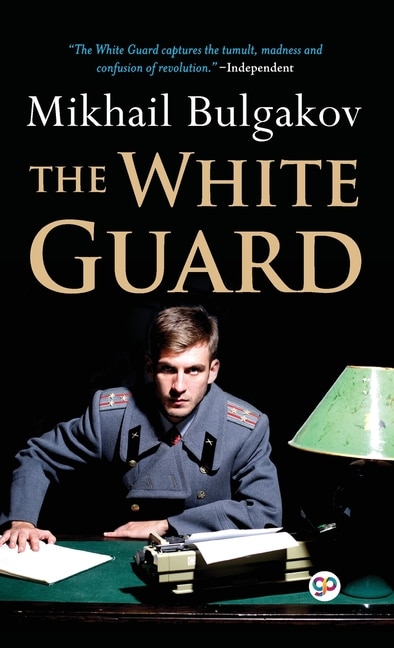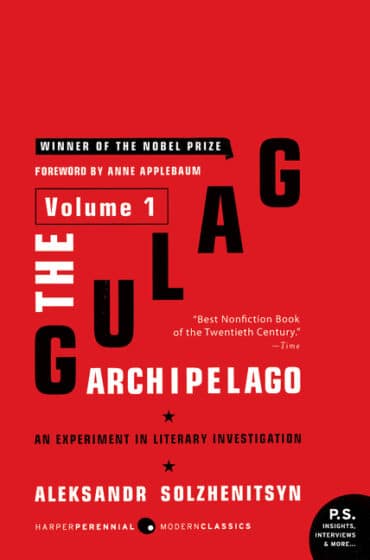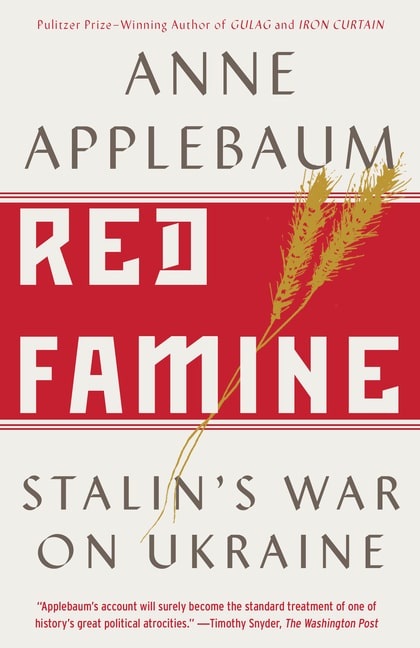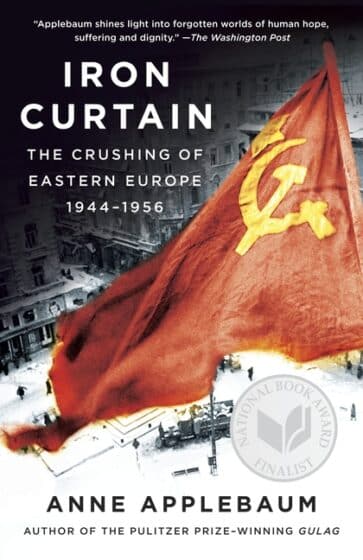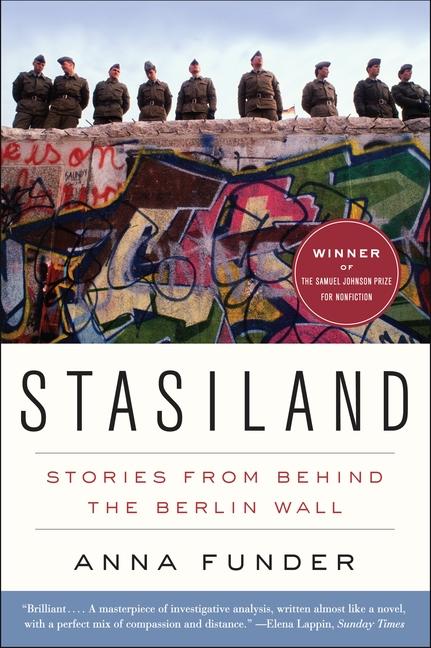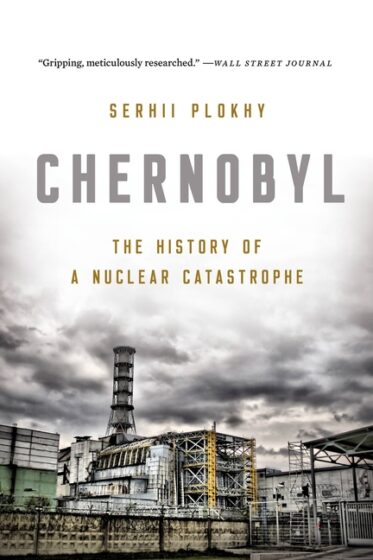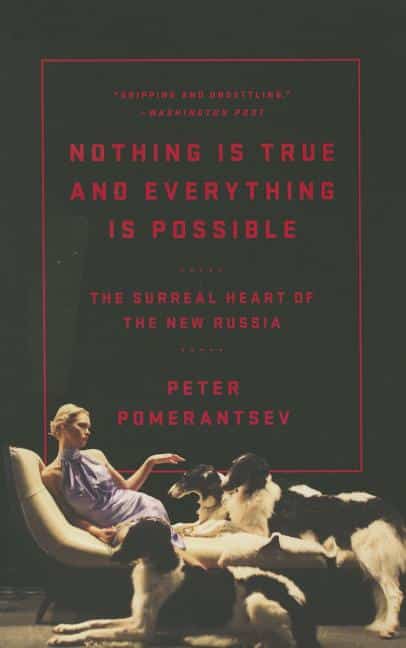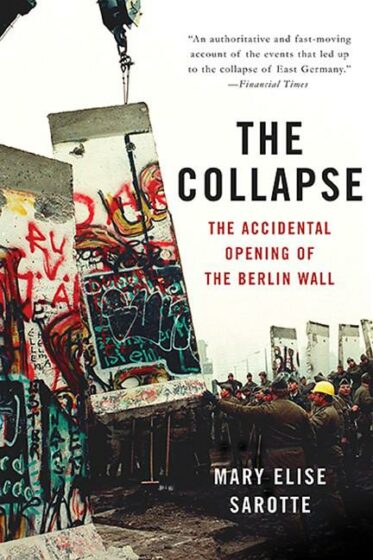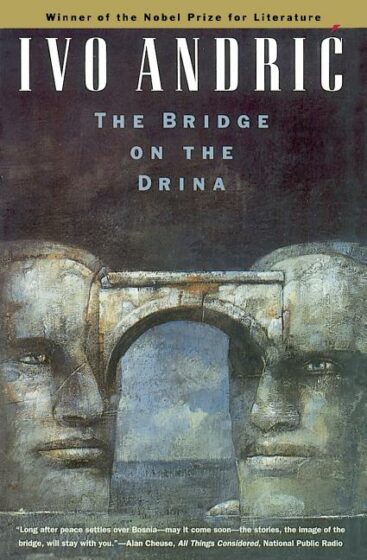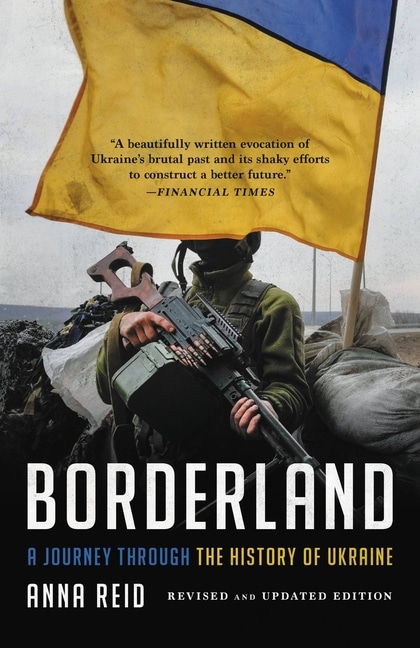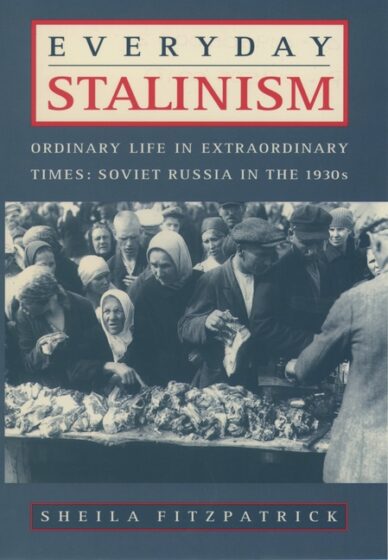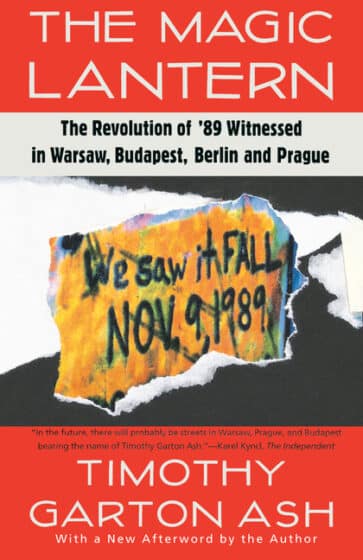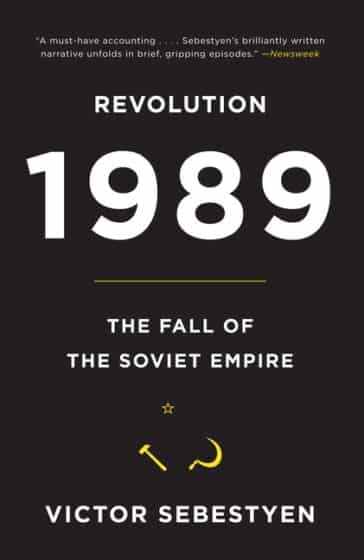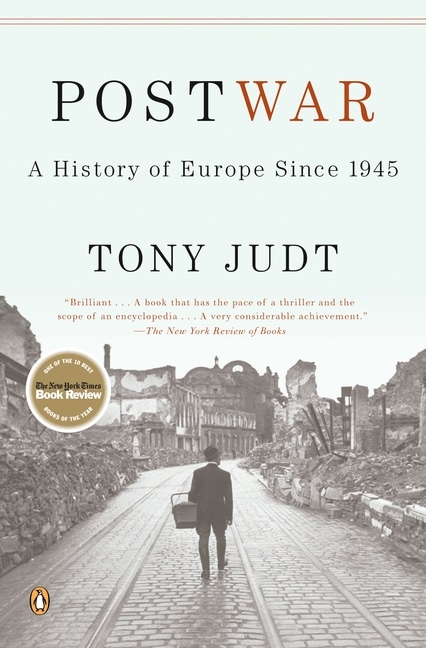
Eastern Europe is a tapestry woven with the colorful threads of diverse cultures, complex politics, and profound historical events. It is a region that has stood at the crossroads of empires and ideologies, serving as a battleground for some of the 20th century’s most defining conflicts.
To truly grasp the intricate layers of Eastern European history – from the rise and fall of the Tsars to the shadows of the Soviet Union and from the chilling silence of Chornobyl to the tumultuous revolutions that reshaped the continent – one must delve deep into the narratives that document its past.
Literature's ability to transport readers across time and space is an incomparable medium for exploring the depths of human experience within these shifting landscapes. Historians, novelists, and eyewitnesses have penned profound accounts that help stitch together the fragmented pieces of Eastern Europe's vast historical puzzle.
In this post, we'll introduce thirteen seminal books that offer varied and invaluable perspectives on Eastern European history. These works will guide us through the tsarist opulence that preceded the revolution, the cold embrace of Gulag camps under Soviet rule, the tumult of the Cold War, and into the heart of New Russia with its surreal blend of glamour and squalor. Whether you're a seasoned history buff or a curious newcomer, these books promise to enrich your understanding of a region whose history has been as tragic as it has been triumphant.
Join us as we embark on a literary journey through the landscapes of memory and reality, exploring the '13 Best Books About Eastern European History.' Each selected title is a portal, offering vivid narrations and critical analyses that complement the complex mosaic of Eastern European heritage.
Pre-Soviet and Early Soviet Era
Eastern Europe's history is saturated with pivotal moments that helped shape the region and the modern world. As we step back into the tempest of the early 20th century, we find two books that shed invaluable light on the monumental events leading up to, including, and following the Russian Revolution—one through the lens of a historian and the other through the creative imagination of a novelist deeply connected to the time.
A People's Tragedy: A History of the Russian Revolution
Figes offers readers a nuanced portrayal, presenting the revolution as a product of long-term socio-economic pressures and the consequence of individuals' choices. His work reminds us that history is not just about great leaders but is fundamentally shaped by the masses—their suffering, hopes, and eventual disillusionment.
The White Guard
Through the lens of literature, Bulgakov paints a vivid picture of the hopes and despairs that accompanied the early years of Soviet power. Given Bulgakov's own experiences, the novel also offers insights into the mindsets of those who found themselves on the wrong side of history—bearing witness to their struggles and emotional turmoil during a time of profound uncertainty.
Soviet Union and Totalitarianism
Through these powerful works, readers gain a sobering insight into the cruel, often hidden machinations of the Soviet Union—a society where individual lives were frequently sacrificed at the altar of a warped utopian ideology. Through rigorous scholarship and a commitment to unveiling the truth, these authors provide an invaluable resource for anyone looking to comprehend the vast human costs of Soviet totalitarianism.
The Gulag Archipelago [Volumes 1-3]
This book is not just an essential read for those interested in understanding totalitarianism; it's a chilling reminder of the gruesome potential of unchecked government power. Solzhenitsyn's detailed accounts lay bare the atrocities committed under Stalin's regime and provide a raw, emotional narrative that serves as a powerful testament to the strength and resilience of the human spirit in the face of despair.
Red Famine: Stalin's War on Ukraine
Through detailed research and gripping prose, Applebaum shines a light on the consequences of ideological zealotry, bringing to life the stories of victims and survivors. It also challenges readers to consider the swirling intersection of politics, nationalism, and starvation as a weapon. "Red Famine" asserts the importance of acknowledging and remembering this largely overlooked genocide within the broader narrative of 20th-century history as it continues to inform the present-day politics of the region.
The Cold War Era
Both "Iron Curtain" and "Stasiland" are instrumental in deepening our understanding of the Cold War in Eastern Europe, yet they differ in scope and presentation. While "Iron Curtain" provides a sweeping historical account of the Soviet grip on the region, "Stasiland" offers a microcosmic look at the personal impacts of East Germany's surveillance state. Together, these books define the contours of a time marked by division, suspicion, and an underlying quest for freedom, continuing to shape the historical narrative of Eastern Europe.
Iron Curtain: The Crushing of Eastern Europe, 1944-1956
Stasiland: Stories from Behind the Berlin Wall
Through her narrative, Funder gives a deeply human perspective to the history of the Cold War by highlighting personal experiences rather than just political events. The stories in "Stasiland" showcase the resilience of the human spirit even in the face of pervasive fear and reveal a world where the line between victim and perpetrator could sometimes become blurred. This book records past events and is a poignant reminder of the long-lasting effects of living under such oppressive conditions.
Post-Chernobyl/New Russia
Together, these two works vividly depict the uncertainty, resilience, and complexity that define post-Chernobyl and new Russia. They serve not only as historical texts but also as probes into the psyche of a society emerging from the shadow of its own past. Reading them offers a broader understanding of the drastic changes Eastern Europe, particularly Russia, has undergone in the closing years of the 20th century and the dawn of the 21st.
Chernobyl: The History of a Nuclear Catastrophe
What makes this book essential is its detailed chronicle of the disaster and its exploration of how the event contributed to the unraveling of the Soviet Union. Plokhy reveals the extent to which misinformation, institutional failure, and human error can conspire to create disaster while shedding light on the bravery of the individuals who confronted the crisis head-on.
Nothing Is True and Everything Is Possible: The Surreal Heart of the New Russia
Pomerantsev, a British journalist who worked in Russian television, uses his personal experiences to uncover a society where oligarchs reign supreme and reality TV shapes public perception. His narrative provides a unique insight into contemporary Russian culture, capturing how the country's history has influenced its current political and social environment. Readers will find themselves captivated by the stories of Russian TV stars, political dissidents, and ordinary citizens all navigating a society where, as the title suggests, anything seems possible.
Modern Perspectives and Retrospectives
Together, "The Last Empire" and "Bloodlands" offer compelling retrospectives on the recent events of the recent past, helping us contextualize the lingering effects of Soviet influence on Eastern Europe's national identities, politics, and society. These books stand as crucial pieces in the wider historical narrative, piecing together the events that have defined a region and the entire modern world.
The Collapse: The Accidental Opening of the Berlin Wall
This book is essential to comprehend the unpredictability of historical events and the human element in shaping world politics. Sarotte's meticulous research offers valuable insights into the broader collapse of East European communism and the subsequent end of the Soviet Union, helping readers understand the geopolitical shifts that have left indelible marks on contemporary Eastern Europe.
Bloodlands: Europe Between Hitler and Stalin
This scholarly yet approachable book is an eye-opener into Eastern Europe's devastatingly high human cost of totalitarianism. By examining the geopolitical struggle between Nazi Germany and the Soviet Union, Snyder reframes our understanding of 20th-century European history. The book warns of the dangers of ethnic nationalism and totalitarian ideologies, shedding light on a dark period that continues to echo in the current socio-political climate of the region.
Regional Focus
By dedicating time to regional studies, we not only enhance our comprehension of the localized experiences within Eastern Europe but also appreciate how these stories interweave with the broader historical narratives of the continent and the world. Through the pages of these insightful books, readers can travel across the heartlands and the borderlands of Eastern Europe, gaining a richer, more nuanced outlook on the region's past and its present.
The Bridge on the Drina
Through interwoven tales of various local inhabitants over four centuries, Andrić provides an enlightening portrayal of Balkan life under the Ottoman Empire, the Austro-Hungarian annexation, and World War I.
Beyond a traditional historical account, this novel imparts a visceral understanding of the cultural and human impacts of the region's geopolitical shifts, the persistence of folklore, and the convergence of Christian, Muslim, and Jewish traditions in the Balkans.
Borderland: A Journey Through the History of Ukraine
Anna Reid explores Ukraine's past, from its medieval origins through Soviet domination to its independence and its contemporary challenges.
The work delves into events such as the enduring legacy of the Kievan Rus', the dark years of the Holodomor, the fight for independence, and the recent annexation of Crimea, offering readers a deeply textured understanding of a nation defined by resilience and survival.
Behind the Iron Curtain – Personal Narratives and Memoirs
Personal narratives and memoirs offer us the most intimate portrayal of life behind the Iron Curtain. The two selections in this section present anecdotal evidence and scholarly synthesis to reveal the realities of daily life under Soviet rule and its aftermath. Here, the voices of the past resonate with authenticity and urgency as they recount experiences that are at once deeply personal and universally illuminating.
Everyday Stalinism: Ordinary Life in Extraordinary Times: Soviet Russia in the 1930s
The Year That Changed the World: The Untold Story Behind the Fall of the Berlin Wall
This book delivers a combination of memoir and historical analysis that brings to light the strategies, emotions, and crucial decisions made by key figures during 1989, a year that signified the end of an era.
Exploring Culture and Society
Eastern Europe's vibrant cultural scene and dynamic social structures have undergone significant transformations over the centuries, influenced by periods of upheaval, regime change, and ideological shifts. To understand the nuanced fabric of Eastern European societies, one must look beyond political events and delve into the lives of its people and their cultural expressions. These two books provide insightful windows into these aspects of Eastern European history:
The Magic Lantern: The Revolution of '89 Witnessed in Warsaw, Budapest, Berlin, and Prague
"The Magic Lantern" examines the cultural significance of the period's art, literature, and intellectual thought and how these elements both influenced and were changed by the political landscape. Ash's narrative reveals how societal yearnings and cultural movements were intimately tied to the political waves crashing over Eastern Europe during these transformative years.
Black Earth: The Holocaust as History and Warning
Far from being only a historical account, "Black Earth" reflects on how the Holocaust's legacy continues to inform current societal attitudes and the importance of preserving memory. Snyder's exploration encompasses the cultural responses to the Holocaust, ranging from literature and cinema to commemoration and education in Eastern Europe. His crucial message is the role of history as a harbinger and key to preventing future tragedies.
Historical Re-evaluations and Debates
One of the most critical aspects of understanding history is recognizing that it is never a static or unchanging narrative. As new evidence comes to light and contemporary perspectives evolve, the history of any region, including Eastern Europe, is subject to re-evaluation and vigorous debate. This section delves into two works that embody this dynamic process, offering a fresh analysis of pivotal moments and movements that have shaped the Eastern European experience.
Revolution 1989: The Fall of the Soviet Empire
By re-evaluating the events of 1989 with rich detail and insight, Sebestyen invites readers to reconsider what they thought they knew about the fall of the Soviet Empire, highlighting the fragility of authoritarian regimes and the power of popular movements.
Postwar: A History of Europe Since 1945
Perhaps most importantly, Judt's work sparks debates about the successes and failures of the European project, the legacy of the Cold War, and the historical narratives constructed in the wake of these consequential years.
In Conclusion
Our exploration of the '13 Best Books About Eastern European History' has taken us through the pages of insightful narratives and critical analyses, each offering a unique window into the tumultuous past of this multifaceted region. We have journeyed from the pre-Soviet era, through the heights of totalitarian regimes, over the rubble of the Iron Curtain, and into the heart of modern Eastern European nations that continue to grapple with the legacy of their histories. These books serve not merely as a collection of historical records but also as a compendium of lessons—reminders of the resilience and fortitude of human societies, the cost of power, and the value of remembrance. They challenge us to consider the different facets of history, including the darker chapters that are essential in understanding the present and guiding the future. These works underscore the importance of diverse narratives in constructing a complete historical picture by examining a range of perspectives, from the political to the personal. We encourage readers to delve into these volumes to deepen their understanding of Eastern Europe's complex past. Whether finding sober reflections in "Bloodlands" or traversing the ideological landscape in "Nothing Is True and Everything Is Possible," you will uncover a deeper sense of connection to the human stories interwoven within historical events. As we conclude, we invite you to reflect on the enduring relevance of Eastern European historical studies and continue exploring beyond these thirteen works. Together, let us keep the dialogue alive, fostering a global community that values and learns from history, using our shared knowledge as a tool for understanding and empathy.Further Reading and Resources
The historical tapestry of Eastern Europe cannot be fully appreciated through a single thread of narrative or perspective. It demands a multifaceted exploration—a quilt of voices and stories that reflect the complex interplay of cultures, politics, and individual lives that shape this region's past and present. The '13 Best Books About Eastern European History' presented in this post provide a foundation for such an exploration, but they are just the beginning.Additional Book Recommendations
For those with an appetite for more, consider diving into the following titles:- The Captive Mind by Czesław Miłosz - A seminal work on the intellectual consequences of political oppression.
- War's Unwomanly Face by Svetlana Alexievich - An oral history of women in the Soviet Union during World War II.
- Between East and West: Across the Borderlands of Europe by Anne Applebaum - A vivid description of the lands and peoples between Germany and the Soviet Union.
- Bury Me Standing: The Gypsies and Their Journey by Isabel Fonseca - An exploration of the lives and culture of the Romani people in Eastern Europe.
- The Haunted Land: Facing Europe's Ghosts After Communism by Tina Rosenberg - A look at the challenges faced by Eastern European countries in the aftermath of communist rule.
Multimedia Resources
To enrich your understanding beyond books, explore documentaries, films, and online archives that provide visual and auditory experiences of Eastern European history:- The Death of Yugoslavia - A BBC documentary series providing an extensive look at the wars in the Balkans.
- The Singing Revolution - Tells the story of how singing played a pivotal role in the independence movement in Estonia.
- Europa Europa - A film about a young Jewish boy surviving World War II by concealing his identity.
- EuroDocs: Online Sources for European History - Provides access to primary historical documents from countries across Europe.

